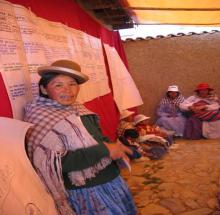
Postabortion care (PAC) reduces maternal mortality and morbidity and addresses unmet need for family planning, a root cause of induced abortion.
Postabortion care, one of the only integrated service delivery models in international public health, provides an integrated package of maternal and child health (MCH) and family planning (FP) services for women having complications from a miscarriage, incomplete abortion, or an induced abortion.
USAID's PAC model has three components:
- Emergency treatment of complications
- Family planning counseling and services
- Community empowerment through community awareness and mobilization
This course provides an overview of postabortion care including its definition, objectives, justification, programming best practices, indicators for monitoring and evaluation, and strong evidence base.
Objective
By the end of this course, participants will be able to:
- Describe postabortion care (PAC) and why it is needed
- Cite the three components of the USAID PAC model
- Describe actions to design, implement, and evaluate PAC programs
- Recall evidence-based approaches to strengthen postabortion family planning
- Access additional assistance and resource materials
Credits
We greatly appreciate the invaluable contributions of the following individuals in developing and reviewing this course: Ellen Starbird, Beverly Johnston, Ricky Lu, Catherine McKaig, Lois Schaefer, John Eyres, Doug Laube, Giuliana Morales, Margaret D'Adamo, and the USAID/PRH staff who pre-tested the course and provided feedback.
Time
- 3 hours
Published/Updated
- Wednesday, May 2, 2018
Course Authors:
Carolyn Curtis, USAID
Erin Mielke, USAID
Course Managers:
- Lisa Mwaikambo, CCP
- Amy Lee, CCP
Related Courses
- Emergency Obstetric and Newborn Care
- Family Planning 101
- Fostering Change in Health Services
- Promising Programmatic Approaches for Adolescent and Youth Sexual and Reproductive Health (AYSRH)
- U.S. Family Planning and Abortion Requirements
